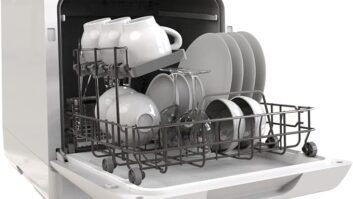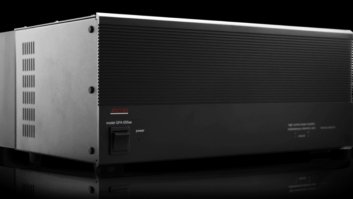Whirlpool and Electrolux first-quarter results illustrate how the global economic recession and soft demand for white goods continue to take a toll on the industry.
Whirlpool said profits fell 27 percent to $73 million and net sales declined 23 percent to $3.6 billion for the three months, ended March 31, excluding the impact of currency fluctuations.
Electrolux fared better, with reported operating income of $4.6 million for the first quarter, ended March 31, compared with a year-ago loss of about $4.7 million, excluding one-time charges. But net sales fell 8.4 percent to $3.1 billion on a comparable currency basis.
Despite the weak showings, the worst of the majap malaise may be over, according to Electrolux CEO Hans Straberg and GE chairman/CEO Jeff Immelt, who believe the industry has finally hit bottom and could begin to reverse nearly three years of dramatic declines.
Immelt noted during a first-quarter GE earnings call last month: “Appliance run rates have gotten sequentially better, which would indicate either our [retail] customers are building inventory or there’s better demand from our consumers.”
GE vice chairman and chief financial officer Keith Sherin added, “We’re 16 months into this cycle in terms of home building, and the inventory rebalance levels have been pretty robust already at the retailers, so now we’re kind of seeing flow-through with our order rates.”
In a statement accompanying the release of Electrolux’s first-quarter results, Straberg observed, “In North America, we’ve experienced 11 consecutive quarters of weakening demand. Even if the decrease is expected to continue in the coming quarters, we see some early signs that we are beginning to reach the bottom … The challenge for us right now is to strike the right balance between the brakes and the gas pedal in order to stand strong when demand turns around.”
Nevertheless, the company’s 8.4 percent sales decline reflected “dramatic decreases in demand” for major appliances within its primary global markets, Straberg said, and the $4.6 million in operating income becomes a $46 million loss when one-time restructuring provisions and write-downs for plants in Europe and Asia are factored in. The company also lost $600,000 during the year-ago quarter.
Helping the bottom line were such belt-tightening measures as headcount reductions, production shifts to low-cost countries and lowered product costs, Straberg said. The company also cut capital expenditures and reduced its inventory position by ramping down production and idling plants.
In addition, new product introductions, including last year’s launch of the premium Electrolux line in the U.S., has allowed the manufacturer to selectively raise prices and improve its product mix.
The new Electrolux line has been well received, Straberg said, delivering the company an approximate 5 percent share of the North American premium appliance segment. Electrolux continues to invest in a new range of Frigidaire-branded products, while “drastically” cutting operational costs amid the “dramatic” downturn in North American demand, which has continued now for 11 consecutive quarters.
Net sales reached $1.1 billion in North America during the first quarter, a 25.7 percent increase, but declined 3.1 percent when currency fluctuations were excluded. The North American unit lost $21.3 million in operating income, representing a nearly 15 percent decline that moderated to a 3.1 percent decrease in comparable currencies.
The company attributed the division’s drop-off in real sales to continued low sales volumes and the ongoing shift in demand to lower-priced products. It ascribed the earnings decline to lower sales volume, higher steel costs and investments in Electrolux brand marketing, which were somewhat offset by price hikes and lowered operational costs.
While the Electrolux launch helped improve the division’s product and margin mix, costs related to the introduction dragged down operating income by about $24 million.
The company said it will take advantage of the weak market conditions in North America to take even greater share, albeit without using price to compete, and will maintain its marketing expenditures for the balance of the year.
Like Electrolux, Whirlpool said its earnings were buoyed by a favorable mix of higher margin products and cost reduction and productivity initiatives. The world’s largest majap maker also enjoyed an income tax benefit and a $97 million pre-tax benefit related to changes in its retirement plan and accounting method.
But the gains were partially offset by higher material costs and substantially lower sales and production volumes, the company said.
“Whirlpool made significant progress in the execution of our key operational priorities during the first quarter,” noted chairman/CEO Jeff Fettig. “Despite the continued macroeconomic challenges, our results were positively impacted by previously announced cost savings actions and restructuring initiatives.”
In North America, sales fell 20 percent to $2.1 billion and declined 17 percent excluding currency fluctuations. Operating profit soared 273 percent to $164 million due to cost reductions, a favorable product mix, and an $87 million gain from cutback in a retiree health savings account.
The gains were partially offset by sharply lower unit production volume, higher material costs and a $23 million expense related to Maytag recall costs.
Looking ahead, Whirlpool expects U.S. industry shipments to fall between 10 percent and 12 percent in units this year, up from a previous projection of 10 percent.













